Review of Electronic Cooling and Thermal Management in Space and Aerospace Applications †
Abstract
1. Introduction
2. Cooling Electronics
2.1. Cooling Techniques
2.1.1. Heat Pipes
2.1.2. PCM
2.1.3. Microchannels
2.1.4. Emergent Coolers
- Carbon-based nanoparticles: Carbon nanotubes and graphene are carbon-based nanoparticles employed for cooling in heat sinks. They significantly improve the thermal performance of liquid blocks due to their excellent thermal conductivities. However, they are not stable in aqueous media, because they are naturally hydrophobic and so cannot be dispersed in polar liquids. This hinders the efficient utilization of them. To overcome this challenge, they are functionalized through acid treatment and in this way, become hydrophilic. Nanofluids containing biologically produced graphene nanoplatelets are suggested as appropriate candidates for utilization in electronic cooling [35].
- Oxide nanoparticles: Alumina and titania nanoparticles are oxide nanoparticles applied in cooling electronics. Spherical oxide nanoparticles are employed to synthesize nanofluids in liquid blocks due to their stability, low cost, and thermal conductivity. Turgut et al. [36] investigated the performance of a commercial liquid cooling kit and found out that when using Al2O3 nanoparticles suspended in water, the temperature of the contact surface between the heater and the water block was 6.7% lower than that using water only. Abu-Nada et al. evaluated the heat transfer coefficient of Al2O3 nanofluids compared to water in a numerical investigation [37]. Bansal et al. evaluated the utilization of nanofluids for spray cooling processes, finding water-based alumina solutions to be promising [38]. The positive results were confirmed by Wang and Xu, who enhanced the heat transfer coefficients and cooling [39].
- Magnetic nanoparticles: Magnetic nanofluids or ferrofluids are the suspensions of ferromagnetic nanoparticles (cobalt, iron, nickel, and their oxides) and non-magnetic base liquid. They have flowabilities of ordinary liquids and magnetic features similar to other magnetic materials simultaneously. This makes it possible to manage the flow, heat exchange, and motion of particles using external magnetic fields. Even if these suspensions can be used, few studies have been carried out on electronic cooling, as the electromagnetic EMI/EMC may be adversely affected.
- Hybrid nanofluids: Hybrid nanofluids are nanofluids that are produced with dispersion, unlike nanoparticles in a composite state or mixture form. The purpose of preparing hybrid nanofluids is to optimize the attributes of different nanoparticles while improving thermal conductivity.
2.2. Design of Electronic Cooling
2.3. Platform Thermal Management
2.4. Thermal Management
2.4.1. Active Thermal Management
2.4.2. Passive Thermal Management
2.4.3. Best Practice for Small Satellite Thermal Management
3. Conclusions
Funding
Informed Consent Statement
Data Availability Statement
Conflicts of Interest
References
- Moore, G. Cramming More Components Onto Integrated Circuits. Electronics 1965, 38, 114. [Google Scholar] [CrossRef]
- IRDS. The International Roadmap for Devices and Systems; IEEE: Piscataway, NJ, USA, 2020. [Google Scholar]
- Kandlikar, S.G. Review and Projections of Integrated Cooling Systems for Three-Dimensional Integrated Circuits. J. Electron. Packag. 2014, 136, 024001. [Google Scholar] [CrossRef]
- Al-Neama, A.F.; Kapur, N.; Summers, J.; Thompson, H.M. Thermal management of GaN HEMT devices using serpentine minichannel heat sinks. Appl. Therm. Eng. 2018, 140, 622–636. [Google Scholar] [CrossRef]
- Garimella, S.V.; Persoons, T.; Weibel, J.A.; Gektin, V. Electronics Thermal Management in Information and Communications Technologies: Challenges and Future Directions. IEEE Trans. Compon. Packag. Manuf. Technol. 2016, 7, 1191–1205. [Google Scholar] [CrossRef]
- MILHDBK-2178B; Reliability Prediction of Electronic Equipment. U.S. Department of Defense, NTIS: Springfield, VA, USA, 1974.
- Scott, W.A. Cooling of Electronic Equipment; John Wiley and Sons: New York, NY, USA, 1974. [Google Scholar]
- Tuckerman, D.; Pease, R. High-performance heat sinking for VLSI. IEEE Electron. Device Lett. 1981, 2, 126–129. [Google Scholar] [CrossRef]
- Faghri, A. Review and Advances in Heat Pipe Science and Technology. J. Heat. Transf. 2012, 134, 123001. [Google Scholar] [CrossRef]
- El-Nasr, A.A.; El-Haggar, S.M. Effective thermal conductivity of heat pipes. Heat. Mass. Transf. 1996, 32, 97–101. [Google Scholar] [CrossRef]
- Garner, S.D. Heat pipes for electronics cooling applications. Electron. Cool. 1996, 2, 18–23. [Google Scholar]
- Chen, X.; Ye, H.; Fan, X.; Ren, T.; Zhang, G. A review of small heat pipes for electronics. Appl. Therm. Eng. 2016, 96, 1–17. [Google Scholar] [CrossRef]
- Patel, V.K. An efficient optimization and comparative analysis of ammonia and methanol heat pipe for satellite appli-cation. Energy Convers. Manag. 2018, 165, 382–395. [Google Scholar] [CrossRef]
- Tan, F.; Tso, C. Cooling of mobile electronic devices using phase change materials. Appl. Therm. Eng. 2004, 24, 159–169. [Google Scholar] [CrossRef]
- Kandasamy, R.; Wang, X.-Q.; Mujumdar, A.S. Application of phase change materials in thermal management of electronics. Appl. Therm. Eng. 2007, 27, 2822–2832. [Google Scholar] [CrossRef]
- Jaworski, M.; Domanski, R. A novel design for heat sink with PCM for electronic cooling. In Proceedings of the 10th International Conference on Thermal Energy Storage, Stockton, NJ, USA, 31 May–2 June 2006. [Google Scholar]
- Ali, H.M.; Arshad, A.; Jabbal, M.; Verdin, P. Thermal management of electronics devices with PCMs filled pin-fin heat sinks: A comparison. Int. J. Heat. Mass. Transf. 2018, 117, 1199–1204. [Google Scholar] [CrossRef]
- Righetti, G.; Zilio, C.; Doretti, L.; Longo, G.A.; Mancin, S. On the design of Phase Change Materials based thermal management systems for electronics cooling. Appl. Therm. Eng. 2021, 196, 117276. [Google Scholar] [CrossRef]
- Wang, Y.-H.; Yang, Y.-T. Three-dimensional transient cooling simulations of a portable electronic device using PCM (phase change materials) in multi-fin heat sink. Energy 2011, 36, 5214–5224. [Google Scholar] [CrossRef]
- Ashraf, M.J.; Ali, H.M.; Usman, H.; Arshad, A. Experimental passive electronics cooling: Parametric investigation of pin-fin geometries and efficient phase change materials. Int. J. Heat. Mass. Transf. 2017, 115, 251–263. [Google Scholar]
- Garimella, S.V.; Sobhan, C.B. Transport in microchannels—A critical review. Annu. Rev. Heat. Transf. 2003, 13, 1–50. [Google Scholar] [CrossRef]
- Khan, M.G.; Fartaj, A. A review on microchannel heat exchangers and potential applications. Int. J. Energy Res. 2011, 35, 553–582. [Google Scholar] [CrossRef]
- Sui, Y.; Teo, C.; Lee, P.; Chew, Y.; Shu, C. Fluid flow and heat transfer in wavy microchannels. Int. J. Heat Mass Transf. 2010, 53, 2760–2772. [Google Scholar] [CrossRef]
- Harpole, G.; Eninger, J. Micro-channel heat exchanger optimization. In Proceedings of the Seventh IEEE Semiconductor Thermal Measurement and Management Symposium, Phoenix, AZ, USA, 12–14 February 1991. [Google Scholar]
- Plawsky, J.L.; Fedorov, A.G.; Garimella, S.V.; Ma, H.B.; Maroo, S.C.; Chen, L.; Nam, Y. Nano- and Microstructures for Thin-Film Evaporation—A Review. Nanoscale Microscale Thermophys. Eng. 2014, 18, 251–269. [Google Scholar] [CrossRef]
- He, Z.; Yan, Y.; Zhang, Z. Thermal management and temperature uniformity enhancement of electronic devices by micro heat sinks: A review. Energy 2020, 216, 119223. [Google Scholar] [CrossRef]
- Park, J.S.; Lee, D.K.; Yim, S.H. Cooling performance evaluation of impingement jet cooling passage on solid-state power amplifier in RF system. Heliyon 2022, 8, e12066. [Google Scholar] [CrossRef] [PubMed]
- Kong, D.; Jung, E.; Kim, Y.; Manepalli, V.V.; Rah, K.J.; Kim, H.S.; Hong, Y.; Gil Choi, H.; Agonafer, D.; Lee, H. An additively manufactured manifold-microchannel heat sink for high-heat flux cooling. Int. J. Mech. Sci. 2023, 248. [Google Scholar] [CrossRef]
- Panse, S.S.; Ekkad, S.V. Forced convection cooling of additively manufactured single and double layer enhanced microchannels. Int. J. Heat. Mass. Transf. 2021, 168, 120881. [Google Scholar] [CrossRef]
- Arani, A.A.; Akbari, O.A.; Safaei, M.R.; Marzban, A.; Alrashed, A.A.; Ahmadi, G.R.; Nguyen, T.K. Heat transfer improvement of water/single-wall carbon nanotubes (SWCNT) nanofluid in a novel design of a truncated double-layered microchannel heat sink. Int. J. Heat. Mass. Transf. 2017, 113, 780–795. [Google Scholar] [CrossRef]
- Souza, R.R.; Gonçalves, I.M.; Rodrigues, R.O.; Minas, G.; Miranda, J.; Moreira, A.L.; Lima, R.; Coutinho, G.; Pereira, J.; Moita, A.S. Recent advances on the thermal properties and applications of nanofluids: From nanomedicine to renewable energies. Appl. Therm. Eng. 2022, 201, 117725. [Google Scholar] [CrossRef]
- Colangelo, G.; Favale, E.; Milanese, M.; de Risi, A.; Laforgia, D. Cooling of electronic devices: Nanofluids contribution. Appl. Therm. Eng. 2017, 127, 421–435. [Google Scholar] [CrossRef]
- Ashrafmansouri, S.-S.; Esfahany, M.N. Mass transfer in nanofluids: A review. Int. J. Therm. Sci. 2014, 82, 84–99. [Google Scholar] [CrossRef]
- Imani-Mofrad, P.; Heris, S.Z.; Shanbedi, M. Experimental investigation of the effect of different nanofluids on the thermal performance of a wet cooling tower using a new method for equalization of ambient conditions. Energy Convers. Manag. 2018, 158, 23–35. [Google Scholar] [CrossRef]
- Sohel Murshed, S.M.; Nieto de Castro, C.A. A critical review of traditional and emerging techniques and fluids for electronics cooling. Renew. Sustain. Energy Rev. 2017, 78, 821–833. [Google Scholar] [CrossRef]
- Turgut, A.; Elbasan, E. Nanofluids for electronics cooling. In Proceedings of the 2014 IEEE 20th International Symposium for Design and Technology in Electronic Packaging (SIITME), Bucharest, Romania, 23–26 October 2014; pp. 35–37. [Google Scholar]
- Abu-Nada, E.; Oztop, H.F. Numerical Analysis of Al2O3/Water Nanofluids Natural Convection in a Wavy Walled Cavity, Numer. Heat Transf. Part A Appl. 2011, 59, 403–419. [Google Scholar] [CrossRef]
- Aditya Bansal, I.I.I. Pyrtle Frank, Alumina Nanofluid for Spray Cooling Enhancement. In Proceedings of the ASME/JSME 2007 Thermal Engineering Heat Transfer Summer Conference collocated with the ASME 2007 InterPACK Conference, Vancouver, BC, Canada, 8–12 July 2007; pp. 797–803. [Google Scholar] [CrossRef]
- Wang, X.; Xu, X.; Choi, S.U. Thermal Conductivity of Nanoparticle - Fluid Mixture. J. Thermophys. Heat Transf. 1999, 13, 474–480. [Google Scholar] [CrossRef]
- Price, D.C. A review of selected thermal management solutions electronics for military system. IEEE Trans. Compon. Pack. Technol. 2003, 26, 26–39. [Google Scholar]
- State-of-the-Art of Small Spacecraft Technology, Chapter 7 Thermal Control, NASA, 7.0 Thermal Control—NASA. Available online: https://www.nasa.gov/smallsat-institute/sst-soa/thermal-control/ (accessed on 1 February 2025).
- Marinan, A.D. From Cubesats to Constellations: Systems Design and Performance Analysis. Ph.D. Thesis, Department Aeronautics Astronautics, Massachusetts Institute of Technology, Cambridge, MA, USA, 2013. [Google Scholar]
- Zhang, X.; Wu, L.; Liu, H.; Feng, J.; Xu, M.; Rui, H. Research and Verification of Multi-Satellite Thermal Vacuum Test Method. In Proceedings of the 2020 International Conference on Sensing, Measurement & Data Analytics in the Ara of Artificial Intelligence (ICSMD), Xi’an, China, 15–17 October 2020. [Google Scholar]
- Sun, R.; Wang, C.; Yin, M.; Yang, Z. Design method of thermal control for micro satellite with integrated structure. In Proceedings of the 2023 2nd International Symposium on Aerospace Engineering and Systems (ISAES), Nanjing, China, 19–21 May 2023; pp. 73–77. [Google Scholar]
- Hu, G.J.; Chen, Y.J.; Wang, M.; Zhou, J.; Tao, J.S.; Li, Y.F.; Liu, B.L. Modular Thermal Control Technology and Its Application for Circular Low Earth Orbit Satellites. J. Astronaut. 2021, 42, 1396–1403. [Google Scholar]
- Zhou, Y. A Balanced Satellite Thermal Control Optimization Method for Different Orbit and Attitude. Chin. J. Space Sci. 2016, 36, 380–385. [Google Scholar] [CrossRef]
- Liu, L.; Zhang, X.; Feng, J. On-Orbit Health Management of Thermal Control Subsystem of a Micro Satellite. In Proceedings of the 2022 Global Reliability and Prognostics and Health Management (PHM-Yantai), Yantai, China, 13–16 October 2022; pp. 1–5. [Google Scholar]
- Li, Y.; Huang, H. Current trends of spacecraft intelligent autonomous control. Aerosp. Control Appl. 2019, 45, 7–18. [Google Scholar]
- Jianchao, F.; Xiaofeng, Z.; Xing, L. Spacecraft intelligent autonomous thermal control method based on space environment rediction. Spacecr. Eng. 2021, 30, 45–52. [Google Scholar]
- Semena, N.P. The features of application of thermoelectric converters in spacecraft systems of temperature control. Thermophys. Aeromechanics 2013, 20, 211–222. [Google Scholar] [CrossRef]
- Guo, D.; Sheng, Q.; Dou, X.; Wang, Z.; Xie, L.; Yang, B. Application of thermoelectric cooler in temperature control system of space science experiment. Appl. Therm. Eng. 2019, 168, 114888. [Google Scholar] [CrossRef]
- Gilmore, D. Spacecraft Thermal Control Handbook, Volume I: Fundamental Technologies; Chapter 13: Thermoelectric Coolers; American Institute of Aeronautics and Astronautics (AIAA): Reston, VA, USA, 2002. [Google Scholar]
- Liu, T.; Sun, Q.; Meng, J.; Pan, Z.; Tang, Y. Degradation modeling of satellite thermal control coatings in a low earth orbit environment. Sol. Energy 2016, 139, 467–474. [Google Scholar] [CrossRef]
- Park, J.H. A study on thermal performance of heat pipe for optimal placement of satellite equipment. ETRIJ 1997, 19, 59–69. [Google Scholar] [CrossRef]
- Hoa, C.; Demolder, B.; Alexandre, A. Roadmap for developing heat pipes for ALCATELSPACE’s satellites. Appl. Therm. Eng. 2003, 23, 1099–1108. [Google Scholar] [CrossRef]
- Shukla, K.N. Heat Pipe for Aerospace Applications—An Overview. J. Electron. Cool. Therm. Control. 2015, 5, 55065. [Google Scholar] [CrossRef]
- Mashaei, P.R.; Shahryari, M. Effect of nanofluid on thermal performance of heat pipe with two evaporators; appli-cation to satellite equipment cooling. Acta Astronaut. 2015, 111, 345–355. [Google Scholar] [CrossRef]
- Li, Y.; Li, N.; Jiang, Z.; Dong, D. Experimental study on the effect of the gas reservoir on the performance of a nitrogen-charged cryogenic grooved heat pipe. Int. J. Refrig. 2023, 155, 114–124. [Google Scholar] [CrossRef]
- Abhat, A.; Groll, M. Investigation of phase change material /PCM/ devices for thermal control purposes in satellites. In Proceedings of the Thermophysics and Heat Transfer Conference, Boston, MA, USA, 15–17 July 1974. [Google Scholar] [CrossRef]
- Fossett, A.J.; Maguire, M.T.; Kudirka, A.A.; Mills, F.E.; Brown, D.A. Brown, Avionics passive cooling with microencapsulated phase change materials. J. Electron. Packag. 1998, 120, 238–242. [Google Scholar] [CrossRef]
- Kumar, R.; Misra, M.K.; Kumar, R.; Gupta, D.; Sharma, P.K.; Tak, B.B.; Meena, S.R. Phase change materials: Technology status and potential defense application. Def. Sci. J. 2011, 61, 576–582. [Google Scholar] [CrossRef]
- Elshaer, A.M.; Soliman, A.M.; Kassab, M.; Mori, S.; Hawwash, A.A. Numerical study about thermal per-formance evaluation of PCM and PCM/fins composite-based thermal control module at microgravity conditions. Interna-tional Journal of Thermofluids. Int. J. Thermofluids 2023, 20, 100419. [Google Scholar]
- Young, J. Advanced Concepts for Small Satellite Thermal Control. In Proceedings of the AIAA/USU Conference on Small Satellites, Technical Session 7: Advanced Technologies I, SSC21-VII-06, Logan, UT, USA, 7–12 August 2021. [Google Scholar]
- Jurkowski, A.; Paluch, R.; Wójcik, M.; Klimanek, A. Thermal modelling of a small satellite data processing unit aided by sensitivity analysis and uncertainty quantification. Int. J. Therm. Sci. 2023, 193, 108514. [Google Scholar] [CrossRef]
- Bonnici, M.; Mollicone, P.; Fenech, M.; Azzopardi, M.A. Azzopardi Analytical and numerical models for thermal related design of a new picosatellite. Appl. Therm. Eng. 2019, 159, 113908. [Google Scholar]
- Yendler, B.; Meginnis, A.; Reif, A. Thermal Management for High Power Cubesats. In Proceedings of the AI-AA/USU Conference on Small Satellites, Pre-Conference Workshop Session VI: Advanced Concepts III, SSC20-WKVI-07, Logan, UT, USA, 1–6 August 2020. [Google Scholar]
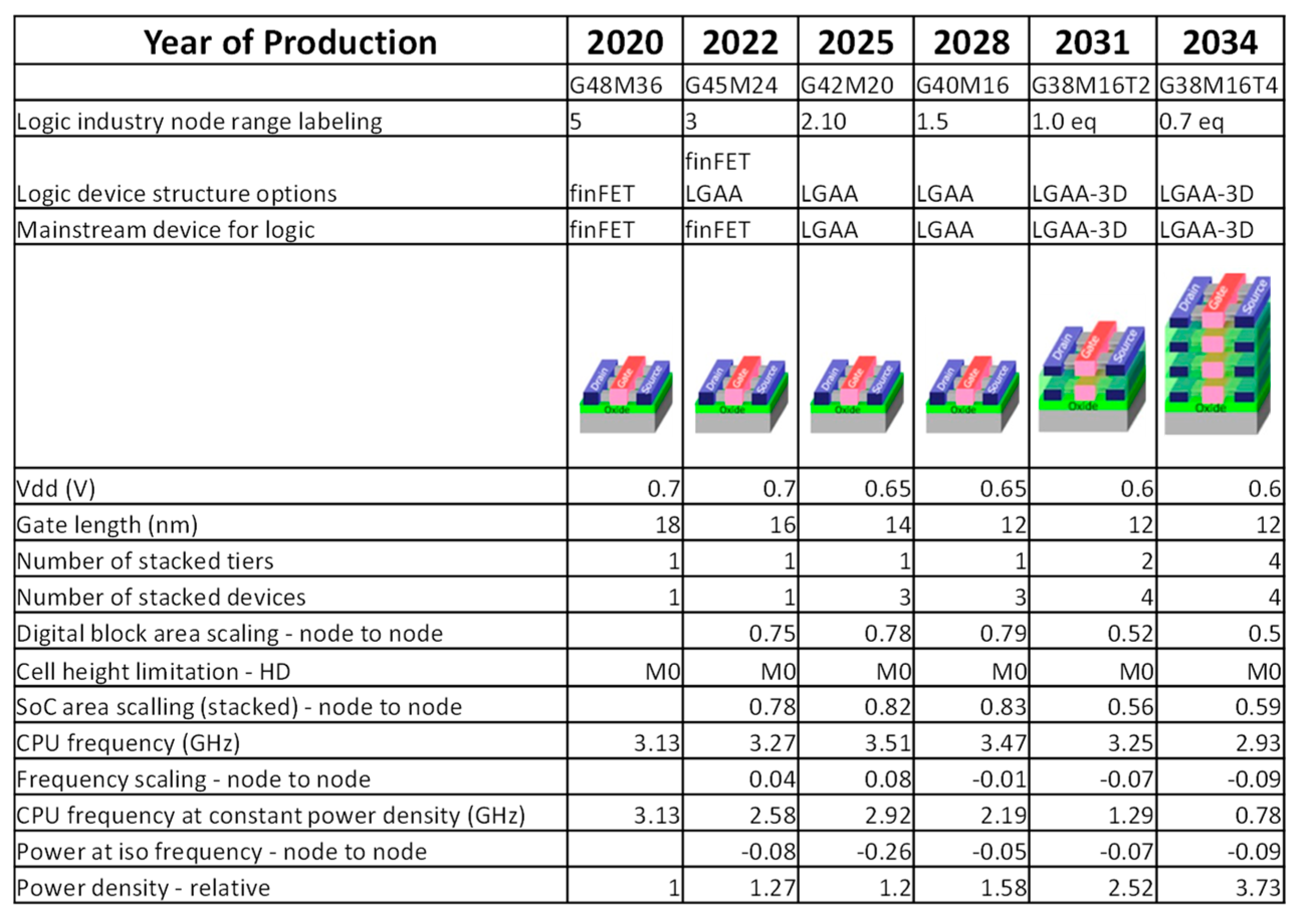
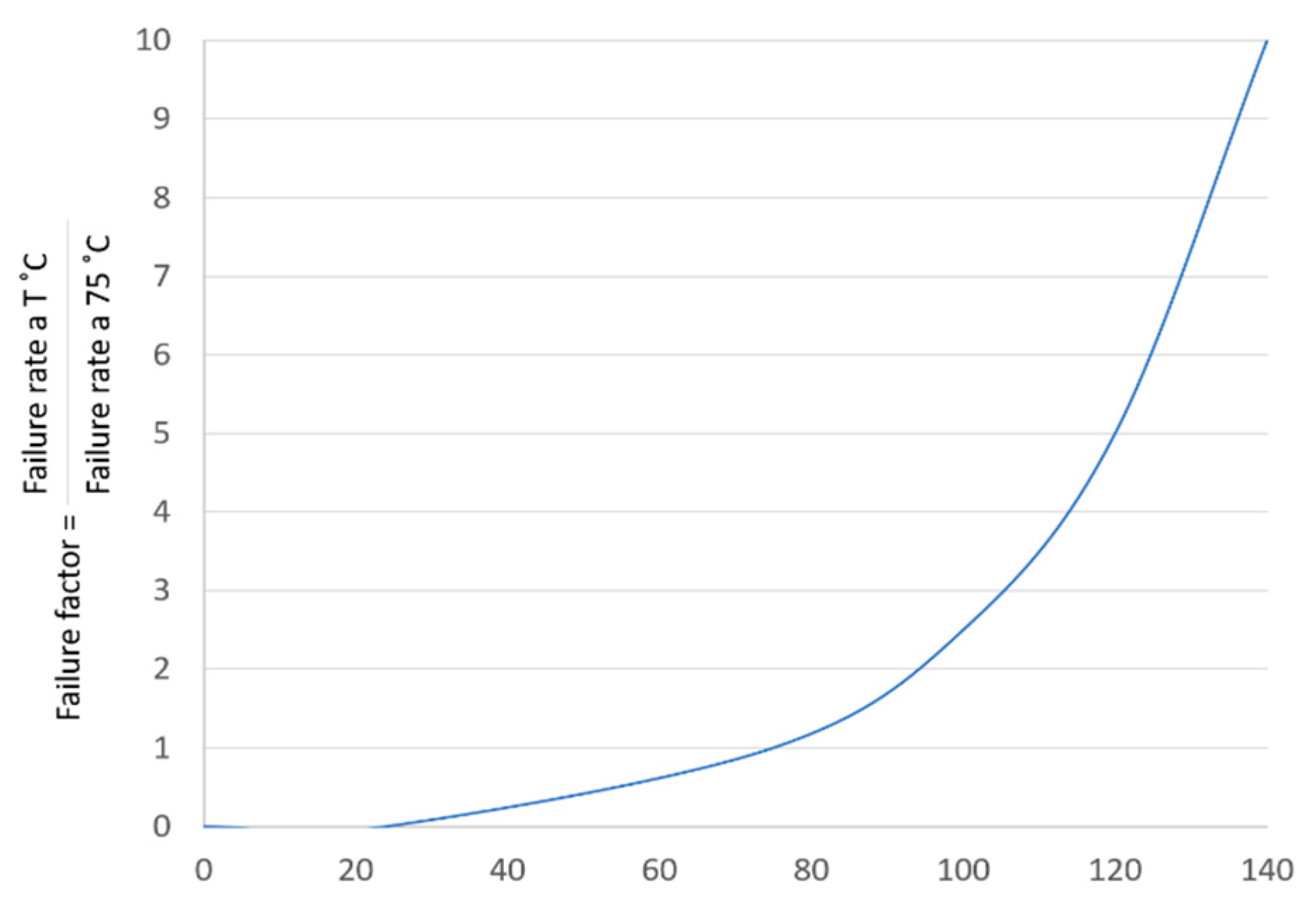
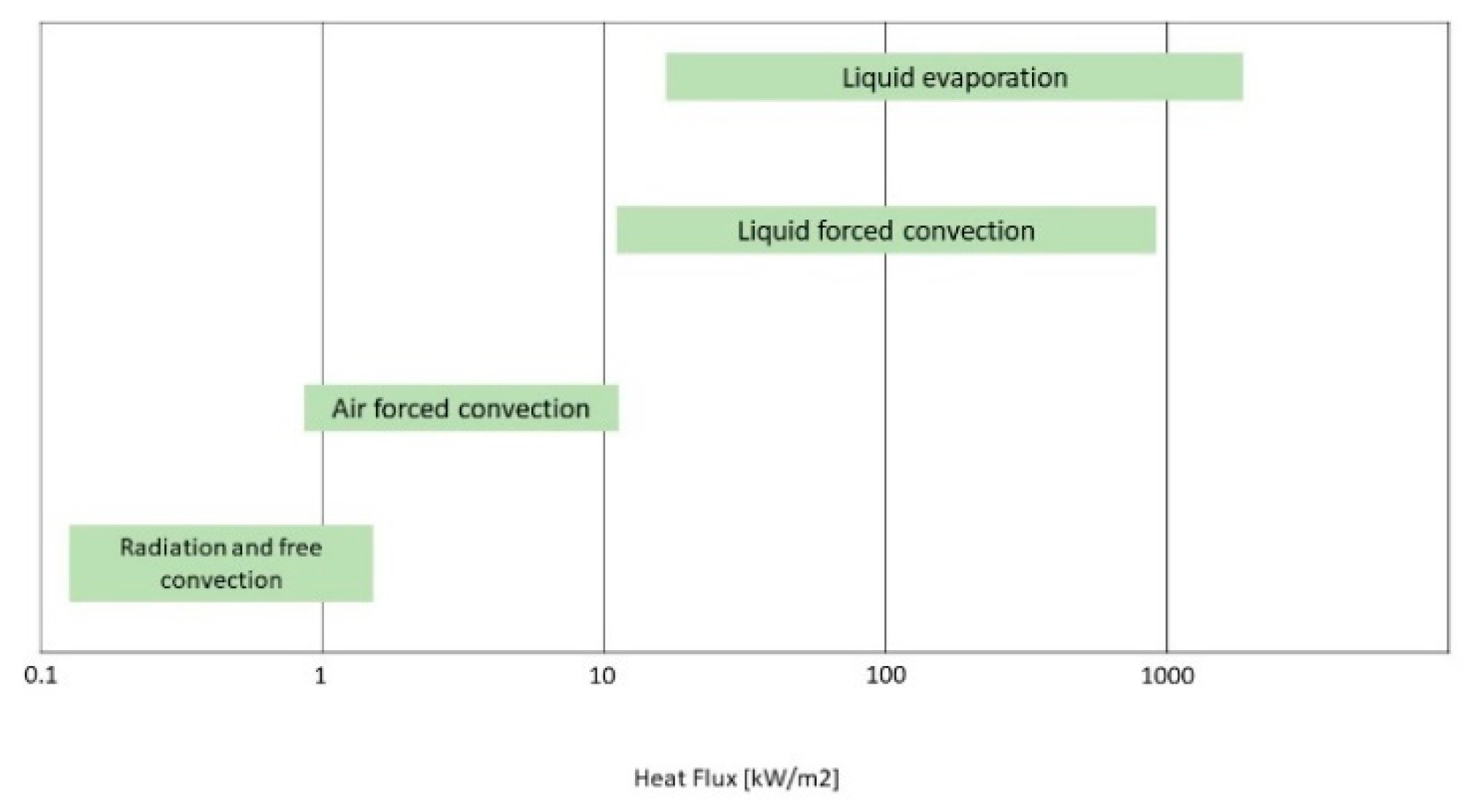
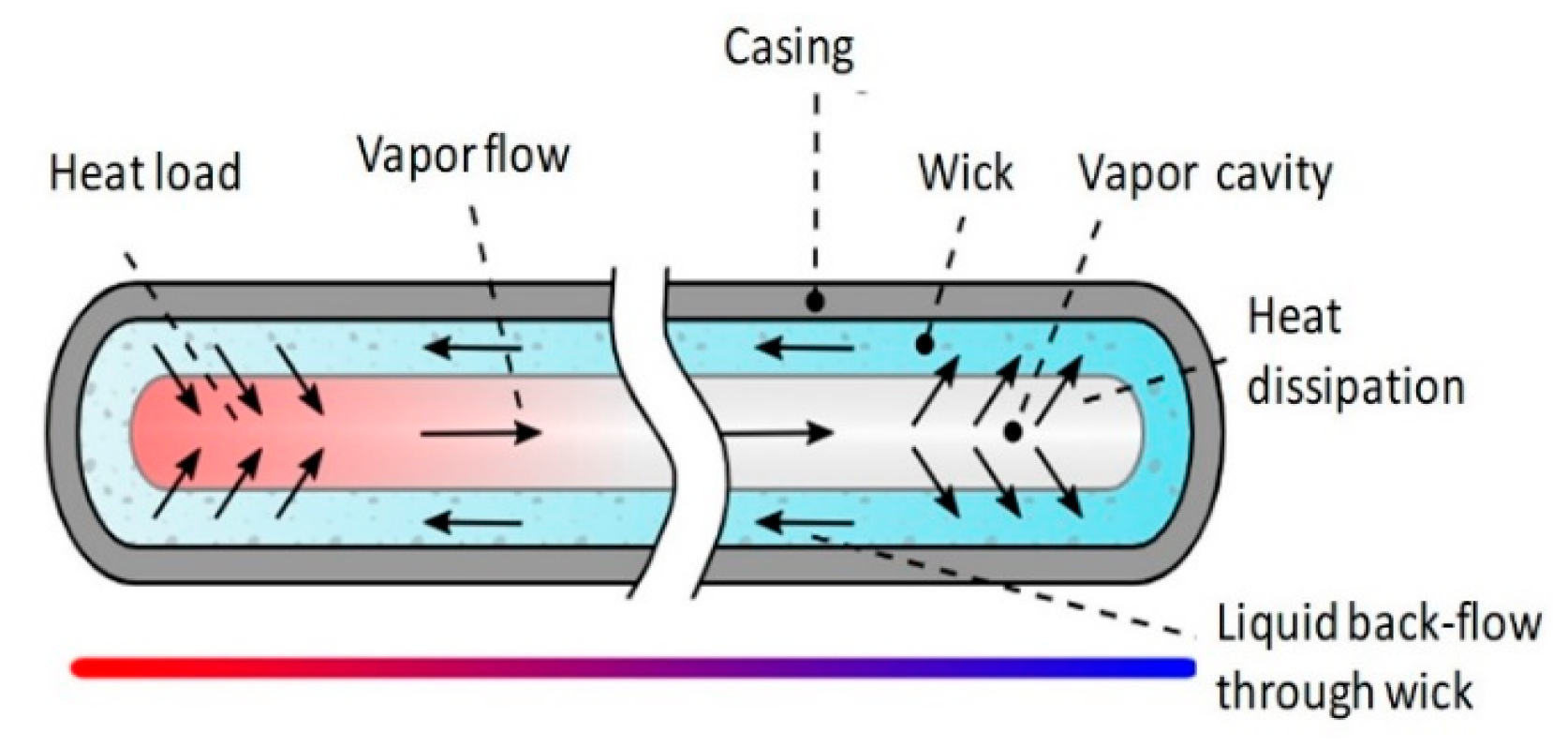
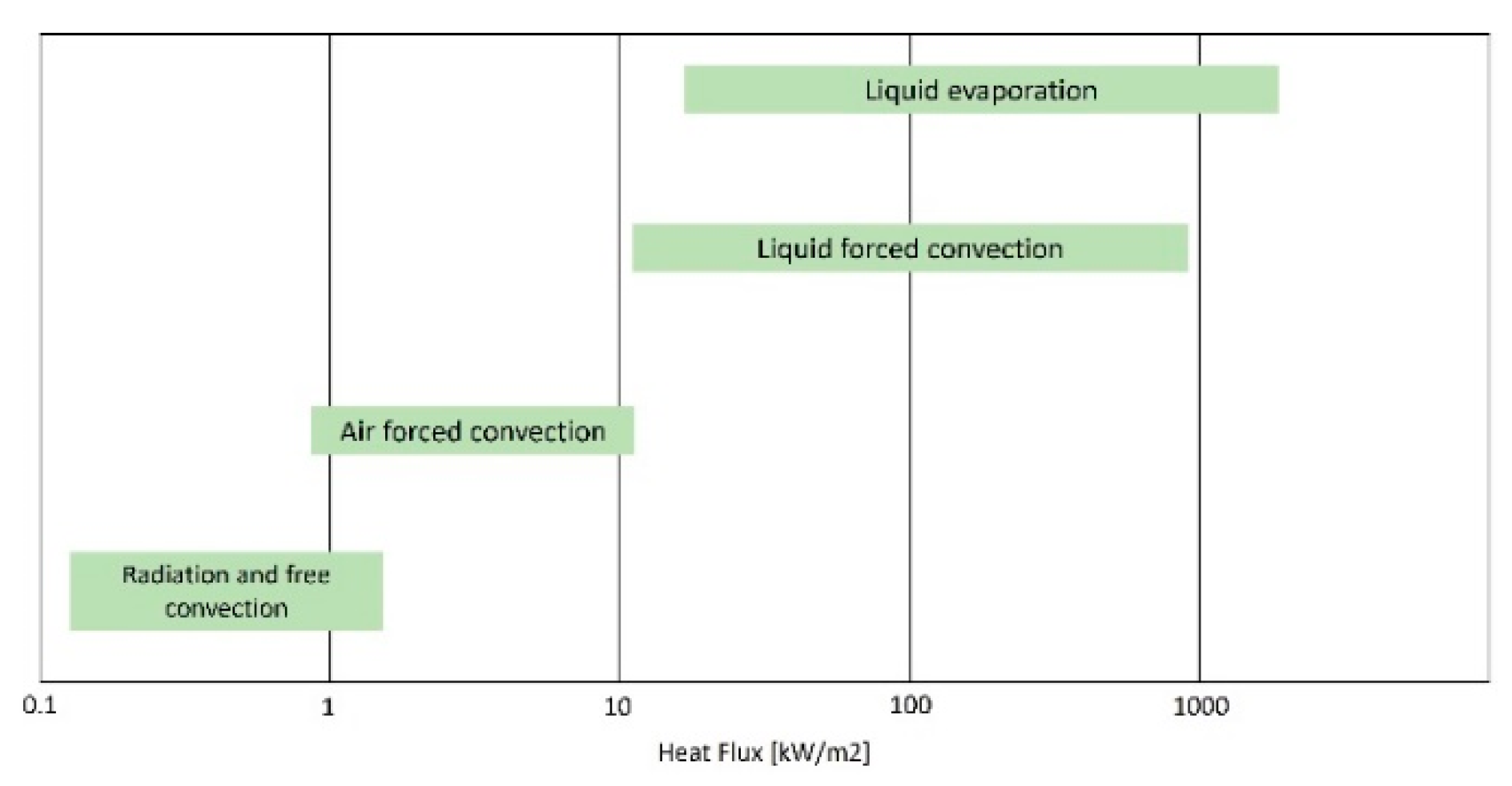

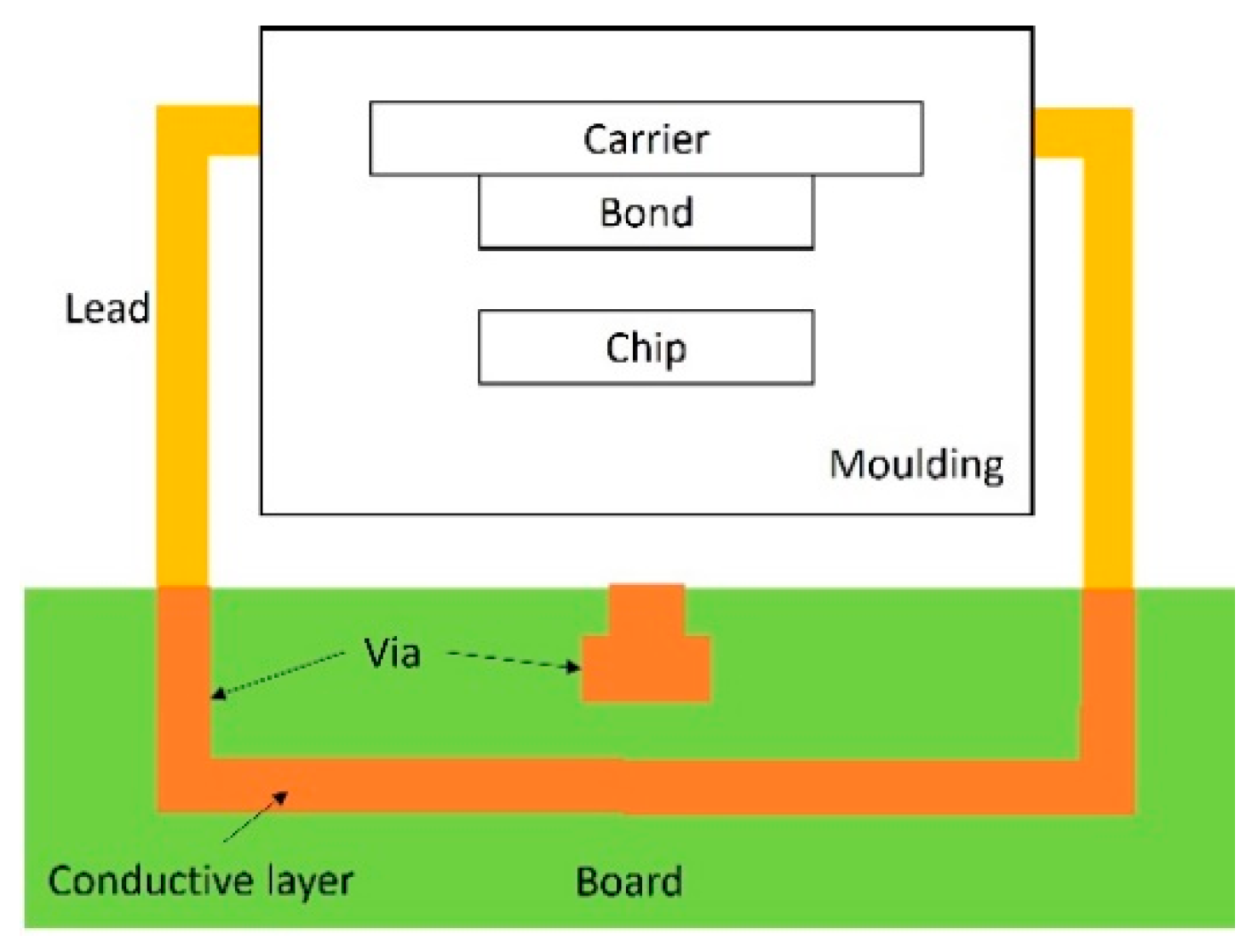
| Satellite Property |
|---|
| Low thermal mass |
| Limited external surface area |
| Limited volume |
| Limited power |
| High power density |
| Multi-layer insulation edge effects |
Disclaimer/Publisher’s Note: The statements, opinions and data contained in all publications are solely those of the individual author(s) and contributor(s) and not of MDPI and/or the editor(s). MDPI and/or the editor(s) disclaim responsibility for any injury to people or property resulting from any ideas, methods, instructions or products referred to in the content. |
© 2025 by the author. Licensee MDPI, Basel, Switzerland. This article is an open access article distributed under the terms and conditions of the Creative Commons Attribution (CC BY) license (https://creativecommons.org/licenses/by/4.0/).
Share and Cite
Ersoy, K. Review of Electronic Cooling and Thermal Management in Space and Aerospace Applications. Eng. Proc. 2025, 89, 42. https://doi.org/10.3390/engproc2025089042
Ersoy K. Review of Electronic Cooling and Thermal Management in Space and Aerospace Applications. Engineering Proceedings. 2025; 89(1):42. https://doi.org/10.3390/engproc2025089042
Chicago/Turabian StyleErsoy, Kivilcim. 2025. "Review of Electronic Cooling and Thermal Management in Space and Aerospace Applications" Engineering Proceedings 89, no. 1: 42. https://doi.org/10.3390/engproc2025089042
APA StyleErsoy, K. (2025). Review of Electronic Cooling and Thermal Management in Space and Aerospace Applications. Engineering Proceedings, 89(1), 42. https://doi.org/10.3390/engproc2025089042





